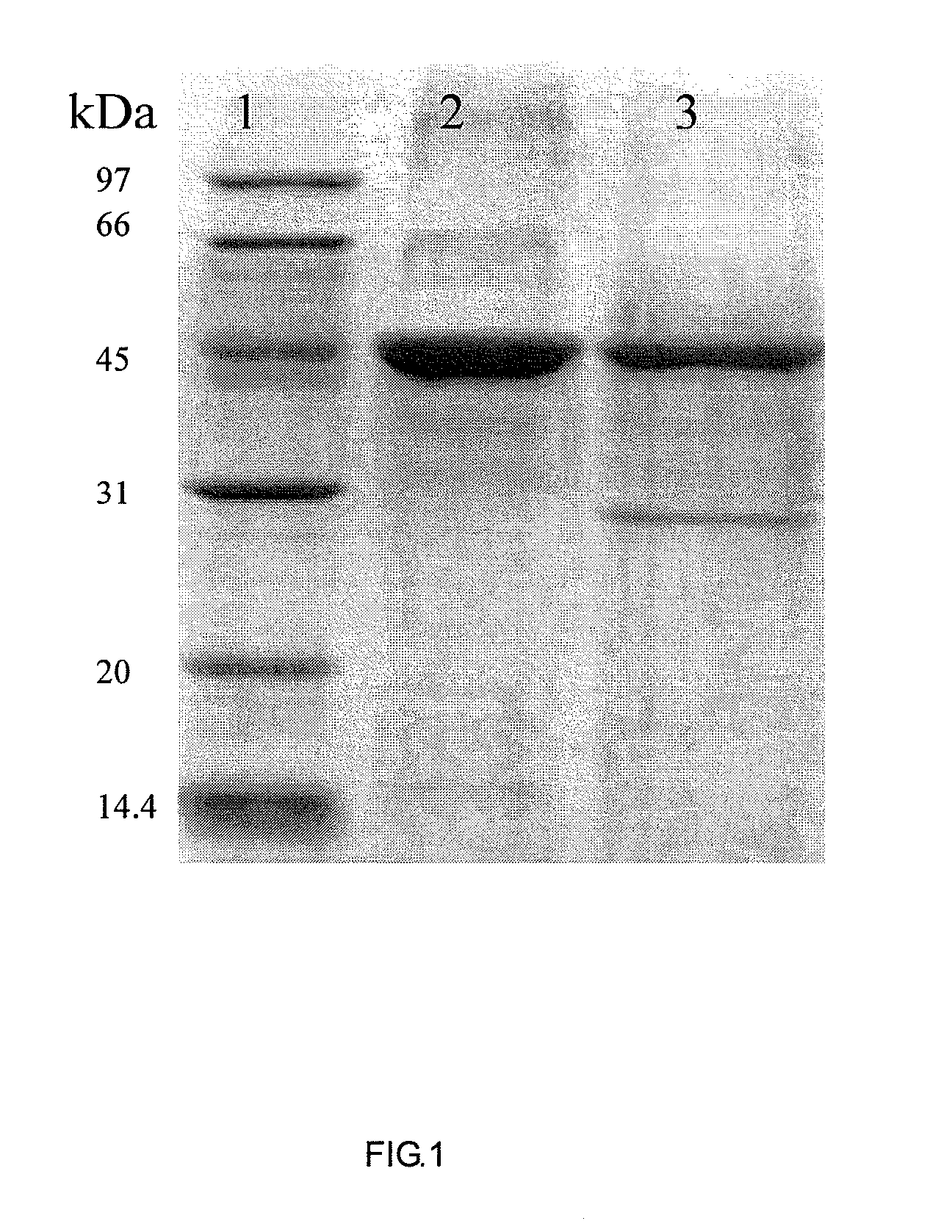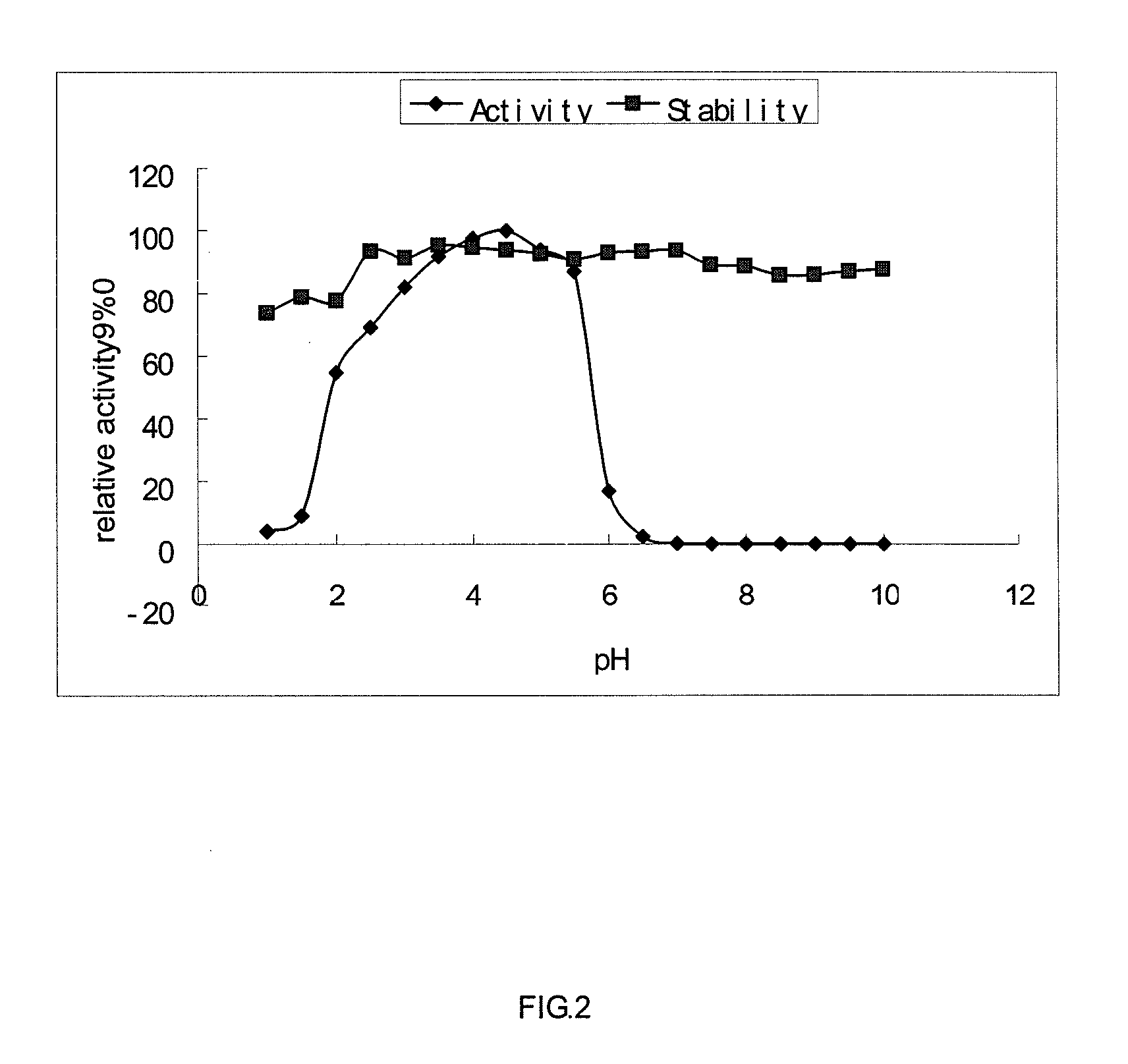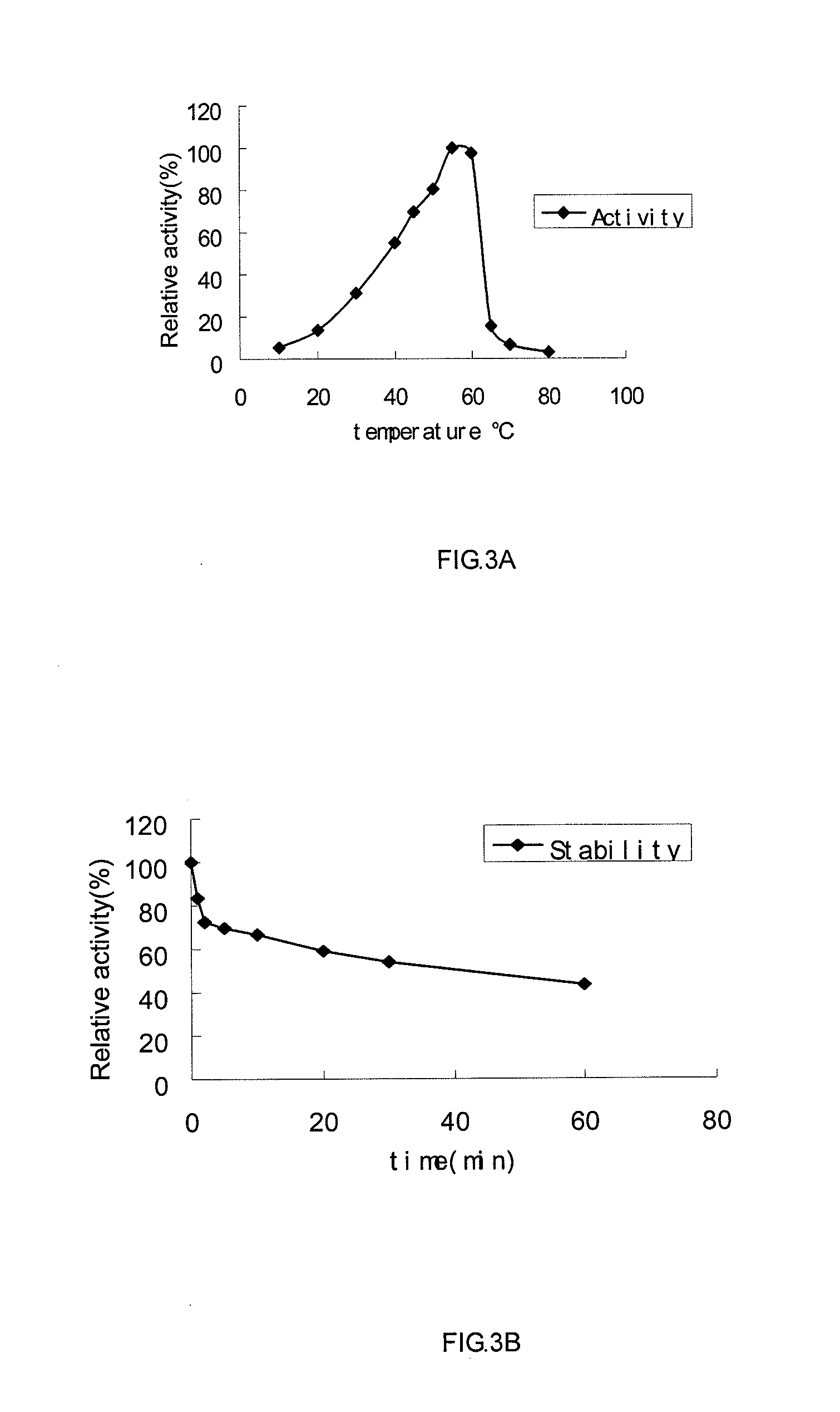Cloning and expression of a novel phytase
a phytase and gene technology, applied in the field of new phytase genes, can solve the problems of increasing the ecological phosphorus burden on land and water, phytic acid reducing the nutritional value of food and animal feed, and the coefficient of utilization of phosphorus is very low, so as to achieve the effect of improving feed efficiency and high level expression
- Summary
- Abstract
- Description
- Claims
- Application Information
AI Technical Summary
Benefits of technology
Problems solved by technology
Method used
Image
Examples
example 1
Separation Phytase-Producing Strain
[0061]Phytase-producing strain was separated from samples of frozen soil from the China No. 1 glacier (Xinjiang province). Particularly, in order to find a phytase-producing strain, Samples of frozen soil from the China No. 1 glacier (Xinjiang province) were collected in April 2005 and stored for several days in an ice chest until they could be processed in the laboratory. The frozen soil was suspended in sterile water and diluted. Then, the supernatant of different samples were inoculated into LB medium without agar, followed by respective cultivation at 4° C., 10° C., 15° C. and 30° C. for 1-2 days. Phytase activities in the culture solution and in cell disruption solution, of different samples at different culture temperatures, were measured by ferrous sulfate-molybdenum blue method (as detailed below in Example 4). Phytase activities were measurable in cell disruption solution, which showed that those strains had intracellular phytase activity....
example 2
Analysis of Characteristics of H-27 Strain Producing a Phytase
[0062]The H-27 strain isolated in the above Example 1, was confirmed to be a gram negative bacterium through Gram straining. The strain was a rod type bacterium, having a similar size to Escherichia coli under light microscope. Some of the biochemical and physiological characteristics of the strain were further investigated. As a result, the strain was a gram negative, facultative aerobic microorganism that could growing with or without oxygen, and the optimum temperature for growth was found to be 30° C. We also analyzed 16s rRNA sequence of the strain. The 16s rDNA sequence (SEQ ID NO: 1) of the strain was amplified by PCR using the Promega Taq kit, and the 16S rDNA sequence of this strain was aligned with reference sequences from GenBank by using BLAST and the multiple sequence alignment program CLUSTAL W. As a result, the base sequence of 16S rDNA showed 99.5% homology with that of Yersinia intermedia and 99% homology...
example 3
[0065]Homology-based cloning may be effective and convenient when the protein whose gene to be cloned is a known member of a multi-gene family. Often, amino acid sequence and DNA sequence alignment of family members reveal a particularly conserved sequence.
[0066]Obviously, according to the classification of phytases, most phtyases from bacteria belong to the family of histidine acid phosphatase (HAP). Upon analysis of various sequences from HAP family by the multiple sequence alignment program CLUSTAL W and the BLOCKS (http: / / blocks.fhcrc.org / blocks / make_blocks.html), we found that there were two conserved sequences among HAP enzymes, namely, RHGXRXP (SEQ ID NO: 7) and HD. Starting from said two conserved sequences, it was possible to design a pair of degenerate primers to amplify part fragment of the phytase gene from the Yersinia intermedia chromosomal DNA by PCR.
[0067] Obtaining a Part of Phytase Gene
[0068]Degenerate primers were designed based on the two c...
PUM
| Property | Measurement | Unit |
|---|---|---|
| Molecular weight | aaaaa | aaaaa |
| temperature | aaaaa | aaaaa |
| temperature | aaaaa | aaaaa |
Abstract
Description
Claims
Application Information
 Login to View More
Login to View More - R&D
- Intellectual Property
- Life Sciences
- Materials
- Tech Scout
- Unparalleled Data Quality
- Higher Quality Content
- 60% Fewer Hallucinations
Browse by: Latest US Patents, China's latest patents, Technical Efficacy Thesaurus, Application Domain, Technology Topic, Popular Technical Reports.
© 2025 PatSnap. All rights reserved.Legal|Privacy policy|Modern Slavery Act Transparency Statement|Sitemap|About US| Contact US: help@patsnap.com



